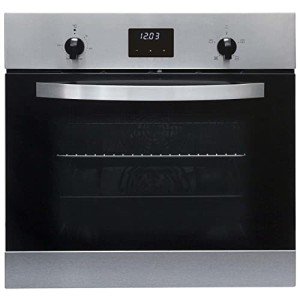15 Gifts For The Sales Ovens Lover In Your Life

The Comprehensive Guide to Sales Ovens: Understanding Their Importance, Types, and Best Practices
Sales ovens, a classification of industrial cooking equipment, are key gamers in the culinary and foodservice industry. These devices, developed to prepare food in large quantities effectively, are essential in restaurants, catering services, and other food facilities. This short article looks into the importance of sales ovens, their types, and best practices for selecting and utilizing them successfully.
What Are Sales Ovens?
Sales ovens, broadly specified, are cooking gadgets used mostly in industrial cooking areas to cook, bake, or heat various food items at scale. Their design allows them to handle greater volume cooking compared to standard property ovens. Offered the nature of food service, sales ovens frequently include sophisticated technologies that promote speed, efficiency, and even cooking.
Importance of Sales Ovens in the Food Industry
Sales ovens play an essential function in food production for lots of reasons:
- Efficiency: Sales ovens can cook food more quickly and uniformly than conventional ovens, allowing chefs to prepare meals in less time.
- Consistency: With exact temperature controls, sales ovens make sure that the food is prepared equally every time, preserving quality across thousands of servings.
- Versatility: Many sales ovens can deal with different cooking approaches including baking, roasting, broiling, and even steaming, making them suitable for diverse menus.
- Energy Savings: Modern sales ovens are frequently designed to be energy-efficient, minimizing operational expenses for businesses.
Kinds Of Sales Ovens
The market uses a range of sales ovens, each fit for specific cooking needs and types of food. Here are the most common types:
| Type of Oven | Description | Best For |
|---|---|---|
| Convection Ovens | Employ a fan to flow hot air, ensuring even cooking. | Baking and roasting items. |
| Combi-Ovens | A mix of convection and steam cooking, supplying versatility in cooking techniques. | Varied menus needing steaming and baking. |
| Conveyor Ovens | Use a moving belt to constantly cook food, ideal for high-volume operations. | Junk food and pizza. |
| Deck Ovens | Feature separate compartments (decks) that can be separately managed, providing high efficiency. | Artisan bread and pastries. |
| Rotisserie Ovens | Created to gradually roast meat on a spit, supplying tender and juicy outcomes. | Roasted meats. |
Selecting the Right Sales Oven
Selecting the proper sales oven for a particular organization requires consideration of numerous factors:
- Volume Needs: Assess the volume of food that requires to be prepared. Greater volume implies deciding for conveyor or combi-ovens.
- Menu Diversity: Understanding what kind of dishes will be prepared can assist the choice process. For example, a pastry shop may need a deck oven, while a restaurant may benefit from a convection oven.
- Space Availability: Measure kitchen space to ensure the ovens fit appropriately and have needed ventilation.
- Budget: Commercial ovens can vary considerably in rate, so establish a budget plan that considers long-term operational cost savings.
- Energy Efficiency: Opt for ovens that have energy ratings to keep energy expenses workable.
Best Practices for Using Sales Ovens
Successfully running a sales oven involves more than easy use. Here are some best practices to remember:
- Regular Maintenance: Schedule routine upkeep to clean and inspect the functionality of the oven. This ensures longevity and performance.
- Pre-heating: Always pre-heat the oven to the preferred temperature before putting food inside for consistent cooking results.
- Use Thermometers: For precision, utilize an oven thermometer to make sure that temperature levels remain constant, particularly for baking.
- Follow Cooking Times: Adhere to advised cooking times based on the kind of food being prepared. Changes may be necessary for different ovens.
- Prevent Overcrowding: Ensure adequate space around food products in the oven to permit proper air circulation.
The Future of Sales Ovens
As innovation advances, so do the capabilities of sales ovens. Developments such as smart innovation, energy-efficient designs, and enhanced safety features are becoming more prominent. These advancements promise to improve cooking performance while also meeting sustainability goals.
FAQs about Sales Ovens
Q1: How do I tidy my sales oven?
A: Regular cleaning involves removing any food debris, cleaning down surface areas with non-corrosive cleaners, and following particular cleansing suggestions from the manufacturer.
Q2: What's the life-span of a commercial oven?
A: Typically, a properly maintained industrial oven can last anywhere from 10 to 20 years, depending upon use and upkeep.
Q3: Can sales ovens be utilized for baking?
A: Yes, many types of sales ovens, particularly convection and deck ovens, are specifically developed for baking a series of items.
Q4: Are there energy-efficient alternatives for sales ovens?
A: Yes, several manufacturers provide energy-efficient models that reduce energy consumption without compromising efficiency.
Q5: How typically should I conduct upkeep on my sales oven?
A: It's recommended to carry out routine maintenance checks monthly or quarter, depending upon use levels. Furthermore, just click the next post must occur a minimum of every year.
Sales ovens are important in the contemporary cooking landscape. Their ability to prepare big quantities of food efficiently makes them important for dining establishments, catering services, and other food establishments. By understanding the different types, selecting the best oven, and adhering to best practices, food service businesses can optimize their cooking processes, boost their offerings, and ultimately delight their consumers with impressive cooking creations.

